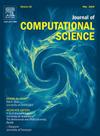Convolutional neural networks can diagnose schizophrenia
IF 3.7
3区 计算机科学
Q2 COMPUTER SCIENCE, INTERDISCIPLINARY APPLICATIONS
引用次数: 0
Abstract
Schizophrenia is a severe mental disorder that affects how individuals think, perceive, and behave, often making accurate and timely diagnosis a significant challenge for clinicians. Traditional diagnostic approaches, such as interviews and psychological tests, have limitations in capturing the complex neurological underpinnings of the condition. In recent years, machine learning and deep learning techniques have shown promise in improving diagnostic accuracy across a variety of medical domains. However, relatively few studies have applied these methods to schizophrenia diagnosis, despite their potential. In this study, we investigate whether convolutional neural networks can effectively diagnose schizophrenia using publicly available EEG data. We achieved classification accuracies of 98.26% in subject-independent settings and 91.21% in subject-dependent settings on the test data, using a fully connected layer based on a Multi-Layer Perceptron classifier. These results appear promising when compared to the current state of the art.
卷积神经网络可以诊断精神分裂症
精神分裂症是一种严重的精神障碍,影响个体的思维、感知和行为方式,对临床医生来说,准确和及时的诊断往往是一项重大挑战。传统的诊断方法,如访谈和心理测试,在捕捉这种情况的复杂神经基础方面存在局限性。近年来,机器学习和深度学习技术在提高各种医学领域的诊断准确性方面显示出了希望。然而,尽管这些方法具有潜力,但将其应用于精神分裂症诊断的研究相对较少。在这项研究中,我们研究了卷积神经网络是否可以利用公开的脑电图数据有效地诊断精神分裂症。我们使用基于多层感知器分类器的完全连接层,在测试数据上,在主题独立设置下的分类准确率为98.26%,在主题相关设置下的分类准确率为91.21%。与目前的技术水平相比,这些结果显得很有希望。
本文章由计算机程序翻译,如有差异,请以英文原文为准。
求助全文
约1分钟内获得全文
求助全文
来源期刊

Journal of Computational Science
COMPUTER SCIENCE, INTERDISCIPLINARY APPLICATIONS-COMPUTER SCIENCE, THEORY & METHODS
CiteScore
5.50
自引率
3.00%
发文量
227
审稿时长
41 days
期刊介绍:
Computational Science is a rapidly growing multi- and interdisciplinary field that uses advanced computing and data analysis to understand and solve complex problems. It has reached a level of predictive capability that now firmly complements the traditional pillars of experimentation and theory.
The recent advances in experimental techniques such as detectors, on-line sensor networks and high-resolution imaging techniques, have opened up new windows into physical and biological processes at many levels of detail. The resulting data explosion allows for detailed data driven modeling and simulation.
This new discipline in science combines computational thinking, modern computational methods, devices and collateral technologies to address problems far beyond the scope of traditional numerical methods.
Computational science typically unifies three distinct elements:
• Modeling, Algorithms and Simulations (e.g. numerical and non-numerical, discrete and continuous);
• Software developed to solve science (e.g., biological, physical, and social), engineering, medicine, and humanities problems;
• Computer and information science that develops and optimizes the advanced system hardware, software, networking, and data management components (e.g. problem solving environments).
 求助内容:
求助内容: 应助结果提醒方式:
应助结果提醒方式:


